Walking a dog at the river bund neighbourhood does yield interesting bird observations along the avenue of semi-deciduous, Yellow Sentol trees (Sandoricum koetjape) planted many years ago during one of our housing community, ‘Love our Rivers’ Campaigns.
Any readers to wonder why Coppersmith Barbets (Megalaima haemacephala) (below left) would choose the near distal end of a dead, woody branch to excavate their nests (below middle), and how deep the nest would be – perhaps to be safe from predators?
Two years ago, the rogue courting behaviours of a pair of Coppersmith Barbets took Bird Ecology Study Group of Singapore (BESG) by storm. Some readers roared with disbelief, conservative ones blushed; many others raised their eyebrows in laughter and the few who disapproved… I don’t care to know!
As Avian Writer, I profess to strive to be as accurate as I can and write only what I actually see and that… I believe can never be far from wrong.
The opportunity came on 20th January 2009 to go one step further, in bringing readers closer to the end result, where it all began – beyond copulation of a ubiquitous pair of Coppersmith Barbets.
It gave the breeding pair, a chance to show prove to us what they really are in their nesting behaviours; to appreciate them while we still have some time left – the opportunity to observe these winged dwindling fast barometers in the wild.
Sighting of an active nest was confirmed on 20th January 2009 (above right).
Is nest building and incubating the eggs done by one parent alone?
The answers came early.
Let’s take a look at these digiscopic sequential photographs.
Nightshift bird seemed to have a habit of crawling out of its cavity, hung on for a second on the edge, looked around and re-entering the nest (above and left).
There was only one opportunity to photograph two birds together to confirm shared ownership of the nest. Dayshift bird showed up and perched on the same tree trunk and called to Nightshift (below left).
Nightshift bird peeped from same tree cavity (below middle and right).
.
.

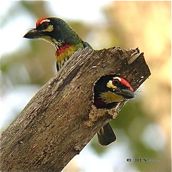

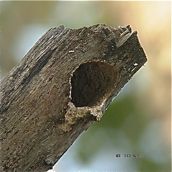
As soon as Nightshift flew out, Dayshift flew in (left).
Four minutes later, Dayshift peeped into the open and proceeded to home decorating chores by chiselling the inner hollow of the wall branch and producing a beakfull of wood shavings (below).
Dayshift flew off to discard shavings and re-entered soon after (bottom).
We have now confirmation that Coppersmith Barbets do share nesting duties in digiscopic photography.
What time do they change duties? When do they change duties? How often do they change duties? What they did after they changed duties?
Do join me in Part 2 to view all the answers in digiscopic sequential photography.
AVIAN WRITER DAISY O’NEILL PENANG MALAYSIA
© OF NESTING SHIFT DUTIES & COPPERSMITH BARBETS (Part 1)
All images by Digiscopy techniques
Optics Used: Fieldscope ED82 +30x + Coolpix P3


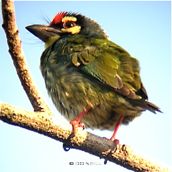
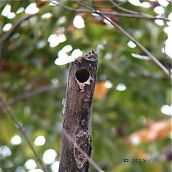
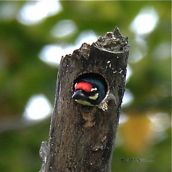

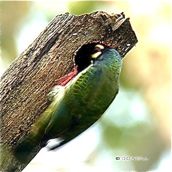
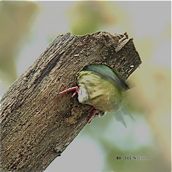
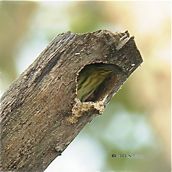
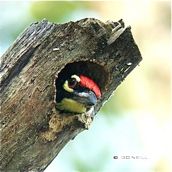
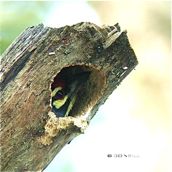
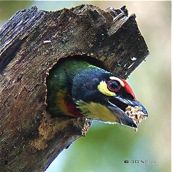








2 Responses
Gosh! really cute couple